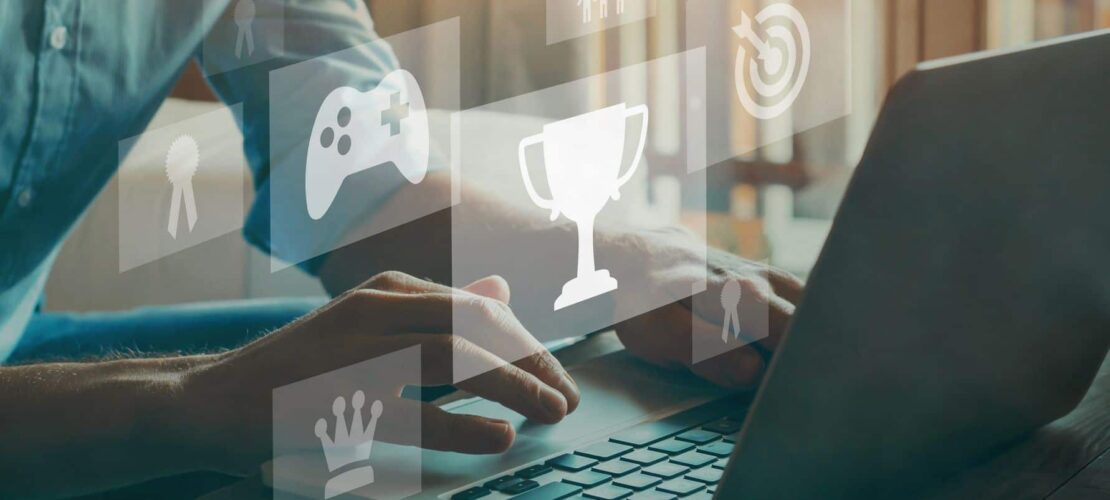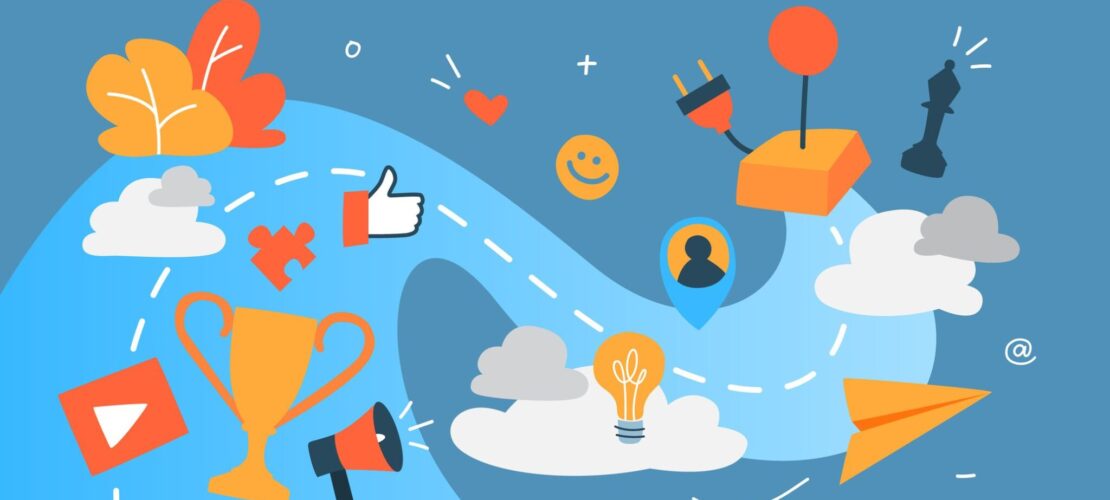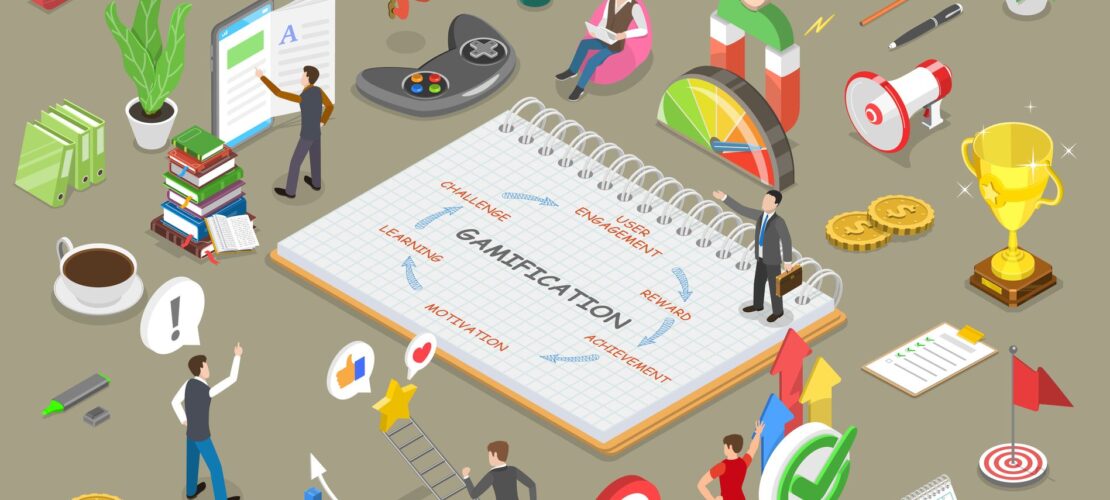
Major companies like Autodesk and Starbucks are harnessing the power of gamification to improve company performance. But is it a solid strategy or just another passing trend?
Here’s the truth: gamification is taking the corporate world by storm. Across industries and business departments, this strategy is transforming the way employees learn and work.
In particular, employee training is getting a major make-over with the help of gamification strategies.
And according to this report by Finances Online, this cutting-edge technique helps businesses and employees alike. Take a look at these statistics:
- Eighty percent of US workers believe game-based learning is more engaging than traditional training.
- Organizations report a 60% increase in employee engagement when they apply gamification tools.
- 87% percent of US workers believe gamification would make them more productive at work.
- Companies experience a 50% improvement in productivity due to gamification training features
Given these promising figures, it’s no surprise that leading businesses are rushing to incorporate gamification into their employee development strategy.
But gamified training is not just for Fortune 500 companies. Companies of all sizes can – and should! –implement gamification in their learning & development strategies.
To help you on your quest to gamify your employee training program, we’re covering all the basics right here. This is what we’re covering in our guide:
- What is gamification in training?
- Why does it work?
- How to implement gamification in your employee training strategy
Interested in learning how gamification can transform your employee learning & development? Keep scrolling!
WHAT IS IT GAMIFICATION IN EMPLOYEE TRAINING?

Definition of Gamification:
Gamification is the use of gaming elements (such as competition and point-scoring) in non-game contexts and activities, with the goal of enhancing engagement and user experience.
In other words, gamification involves taking traditional components of the “game-playing” experience and applying them to other types of activities.
Basic elements of gameplay used in gamification:
- Badges
- Levels
- Points or in-app “currency”
- Leaderboards
- Rewards
- Competition
- Teamwork
- Storytelling
- Progress bars
Gamification in training:
Gamified training is training that utilizes gameplay elements and techniques. The purpose of training gamification is to improve engagement, increase retention, boost motivation, and increase user adoption.
That’s right – gamification is not just a feel-good fad whose sole purpose is to make training more fun (although there’s nothing wrong with a little fun!).
While it does create a more enjoyable training experience, the fun is the means, not the end.
Here’s another important distinction to make. It does not necessarily mean that your entire training experience is turned into one big video game with suited characters and quests.
Something as simple as adding a progress bar to your employees’ training dashboard is an example of gamification.
WHY DOES GAMIFICATION WORK?

Like we mentioned in the last section, the “fun and games” of gamification is the means, not the end. When done correctly, it makes a measurable difference in training outcomes.
Here’s why it works:
Provides incentives to learning
One of the main reasons why gamification works in training is because it incentivizes learning. It makes use of our brain’s powerful reward system to encourage employees to continue learning.
Engages employees
Another reason for its effectiveness is its ability to boost engagement. Incentives, competition, and fun activities that break up regular day-to-day work leads to more engaged learners.
And this is important because employee engagement has many workplace benefits, from increased productivity to lower turnover.
Fosters team building
Some of the most successful iterations of gamification make use of a little healthy competition and teamwork. In the context of training, this can be a valuable team building opportunity.
By encouraging your employees to solve problems together and learn together, gamified training can improve the way your teams work with each other in the real world.
Increases information retention
One of the biggest challenges in corporate training is retention of information. Unfortunately, for far too many years, training has been one-sided and dull.
By making training interactive and exciting, gamification actually increases retention of information.
Learn by doing
Another major challenge in employee training is the big divide between “learning” and “doing.” Some versions allow for kinesthetic learning, or learning by doing.
This way, employees can practice new techniques and ideas in the learning environment, where it’s safe (and productive!) to make mistakes.
HOW TO IMPLEMENT GAMIFICATION IN YOUR EMPLOYEE TRAINING STRATEGY

Start with what you have
Your organization doesn’t have to scrap all of its existing training in order to gamify it. In fact, your current training program is the best place to start your gamification revamp.
Ask yourself: Which aspects of training do my employees struggle to get through? Which modules appear to be more challenging or dense?
These questions will allow you to identify which areas of your training could use a little boost.
Because gamification encourages learning and retention, your current pain points may be a good place to start folding in strategic gameplay elements. Gamification will help break up dense content and make it more interactive.
Consider going digital
At RTG Solutions Group, we are big fans of remote training
In a workforce that increasingly works from home, it just makes sense to offer training that is modern and flexible.
Online training platforms often have built-in gamification features. This takes a lot of the heavy lifting out of gamifying your training, which can be helpful when you are embarking on your gamification journey.
When it comes to digital employee training, Learning Management Systems (LMS) are the gold standard. They are a one-stop shop for all-things training, allowing for an efficient and streamlined training program.
For more reading on how to take your training online, check out these articles:
- How to pick the best LMS: 7 expert tips
- 7 steps to a successful LMS training roll-out
- Instructional design 101: best practices for effective online training
Implement interactive features
Not all interactive training is gamified, but all gamified training is interactive.
Interactive content is at the heart of gamification, and there’s good reason for that. Interaction is what boosts engagement and retention.
Here are some examples of interactive tools and techniques, ranging from the familiar to the high-tech:
- Trivia
- Storytelling
- Progress bars
- Simulations (in-person or virtual)
- Scavenger hunts
- Augmented Reality and Virtual Reality
- Rewards and points systems
You can use different combinations of these interactive features to gamify your employee training experience.
To learn more about interactive learning techniques, check out our article on 5 innovative online learning tools that will boost employee engagement!
Gradually incorporate gamification elements
While you can certainly go all-out and implement a full-blown training overhaul, that’s not the only way to revamp your training.
As we’ve discussed in this article, there are lots of different approaches to gamification. To figure out which combination of tools and techniques works best for your training program, a gradual shift to gamification may be the best route.
For example, you could start by gamifying a dense training module with levels and rewards. If that works, you could progressively gamify other aspects of training until you’ve weaved gamification features throughout the entire training experience.
Foster healthy competition
When thinking about gamification, it’s important to look beyond the individual employee learning experience.
The best gamified training brings teams together by harnessing the power of healthy competition. This not only adds another layer of incentives, but it also encourages social connections among your employees.
This is where things like leaderboards, team challenges, rewards, progress bars and other collective gameplay elements can be very useful.
Measure outcomes
Gamification is not all fun and games! In order for it to work, like anything else, you need good data behind your strategy.
Before you set out on your gamification journey, decide what Key Performance Indicators (KPIs) you will use to measure improvements in training outcomes. Then, put measures in place to collect the desired data.
Over the course of your roll-out, make sure to analyze the KPIs to assess whether your gamification strategy is making a measurable impact.
As your data comes in, you will be able to see what’s working and what isn’t, so you can adjust your gamification approach accordingly.
CONCLUSION
Gamification is redefining the way people learn in the corporate world. And it’s all for the better. Gamification improves learning, increases employee engagement, and boosts productivity.
Businesses of all sizes and industries can benefit from gamified training. The time to try it out is now, before the competition beats you to it!
Ready to embark on your gamified training journey, but not sure where to start? Contact us today to speak with our learning and development experts!
